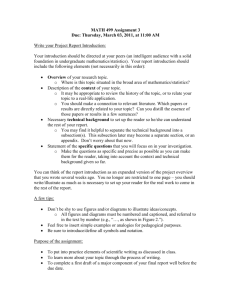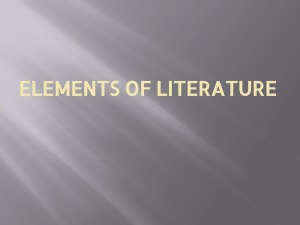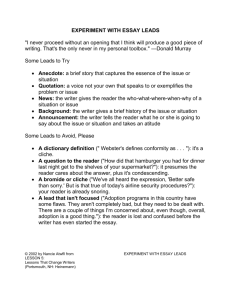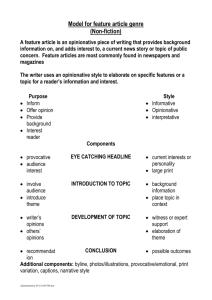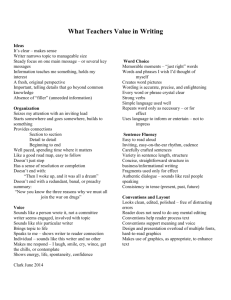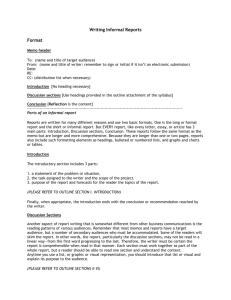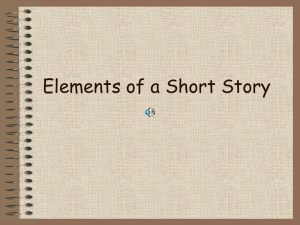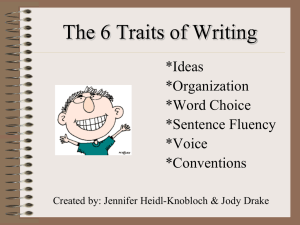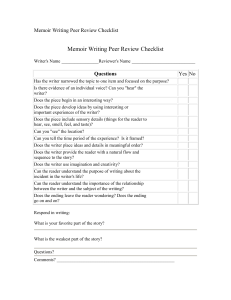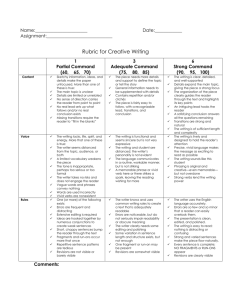EOC Review Handout
advertisement
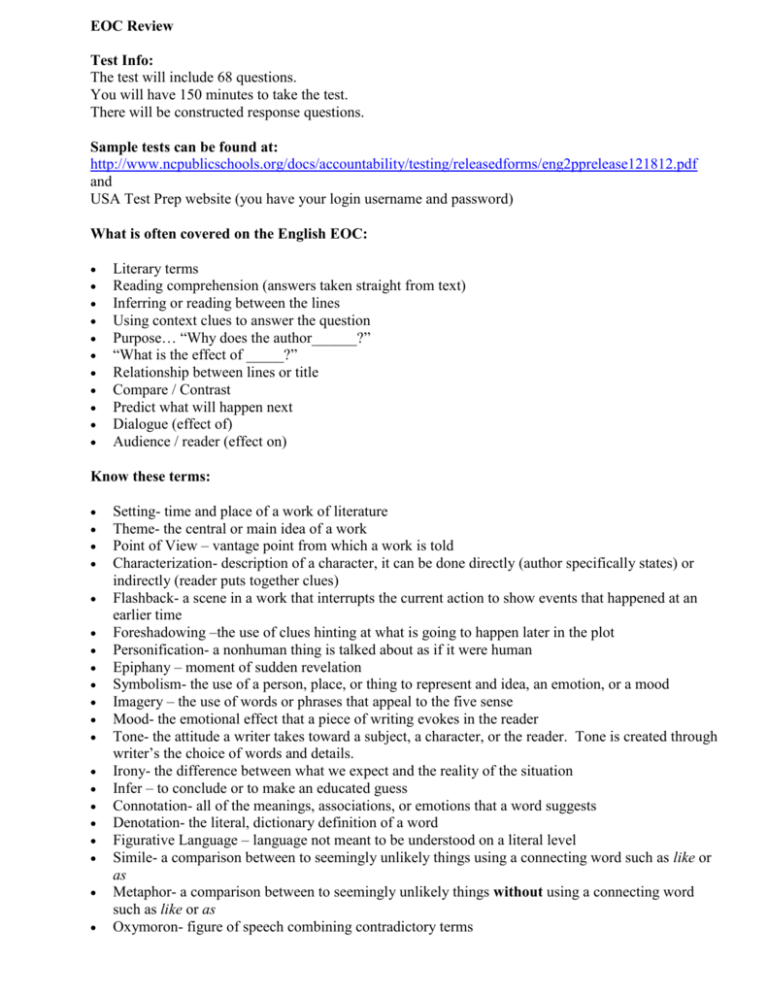
EOC Review Test Info: The test will include 68 questions. You will have 150 minutes to take the test. There will be constructed response questions. Sample tests can be found at: http://www.ncpublicschools.org/docs/accountability/testing/releasedforms/eng2pprelease121812.pdf and USA Test Prep website (you have your login username and password) What is often covered on the English EOC: Literary terms Reading comprehension (answers taken straight from text) Inferring or reading between the lines Using context clues to answer the question Purpose… “Why does the author______?” “What is the effect of _____?” Relationship between lines or title Compare / Contrast Predict what will happen next Dialogue (effect of) Audience / reader (effect on) Know these terms: Setting- time and place of a work of literature Theme- the central or main idea of a work Point of View – vantage point from which a work is told Characterization- description of a character, it can be done directly (author specifically states) or indirectly (reader puts together clues) Flashback- a scene in a work that interrupts the current action to show events that happened at an earlier time Foreshadowing –the use of clues hinting at what is going to happen later in the plot Personification- a nonhuman thing is talked about as if it were human Epiphany – moment of sudden revelation Symbolism- the use of a person, place, or thing to represent and idea, an emotion, or a mood Imagery – the use of words or phrases that appeal to the five sense Mood- the emotional effect that a piece of writing evokes in the reader Tone- the attitude a writer takes toward a subject, a character, or the reader. Tone is created through writer’s the choice of words and details. Irony- the difference between what we expect and the reality of the situation Infer – to conclude or to make an educated guess Connotation- all of the meanings, associations, or emotions that a word suggests Denotation- the literal, dictionary definition of a word Figurative Language – language not meant to be understood on a literal level Simile- a comparison between to seemingly unlikely things using a connecting word such as like or as Metaphor- a comparison between to seemingly unlikely things without using a connecting word such as like or as Oxymoron- figure of speech combining contradictory terms Know these terms continued: Rhetorical Question- a figure of speech in the form of a question that is asked in order to make a point and without the expectation of a reply Diction- a writer’s choice of words; an essential element of a writer’s style Alliteration- repetition of the same or similar consonant sounds in words that are close together Objective – based on facts Subjective – includes personal feeling and opinions Antonyms- words that have the opposite meaning Synonyms – words that have almost same meaning Poetry: Rhyme Scheme- pattern of rhyme between lines of a poem Stanza- a grouping of two or more lines in a poem Constructed Response: Your constructed response answer should have these components: 1. Topic sentence - Use the question to form your topic sentence by using the same terms in the question for the first sentence of your answer. 2. Give 1st specific example or detail taken from the text 3. Explain how the example or detail supports the topic sentence 4. Give a 2nd specific example or detail taken from the text 5. Provide another explanation for how your 2nd example or detail supports the topic sentence 6. Conclude


